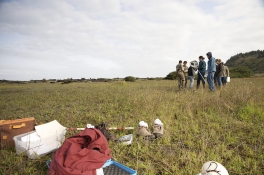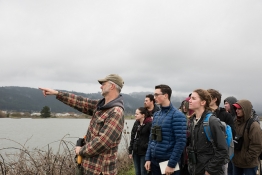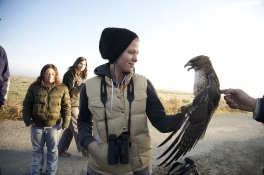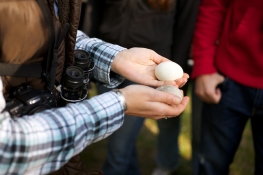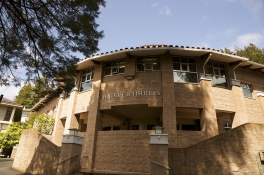Previous Spills
Before the establishment of the Marine Wildlife Care Center in 1997, the last documented spill in the area that impacted wildlife was a ruptured Standard Oil pipeline on November 24, 1968. 62,965 gallons of diesel spilled into Humboldt Bay, killing hundreds of waterfowl. The next local spill with wildlife impact didn't occur for nearly 30 years.
Kure, November 5, 1997
Just nine months after the opening of the Marine Wildlife Care Center, the M/V Kure struck a pylon at the Louisiana Pacific dock at Samoa on the North Spit in Humboldt Bay. The fuel tank was punctured and approximately 4,500 gallons of Intermediate Fuel Oil 180 (IFO-180) discharged into the bay. The incoming tide moved oil into North Bay, and the outgoing tide spread oil on to ocean beaches as far north as Trinidad. 482 birds were found dead, 479 were brought alive to the Center. Some of the 48 species affected included Common Murre, White-winged Scoter, Dunlin, Surf Scoter, and Horned Grebe. 41.9% of the birds brought to the Center alive were subsequently released.
Kure FINAL damage assessment and restoration plan Report Appendices
Stuyvesant, September 6, 1999
The dredge Stuyvesant was about one mile off the mouth of Humboldt Bay when it punctured its fuel tank with one of its dredge arms, and discharged about 2,100 gallons of IFO-180. The dredge moved four miles offshore where it dumped its dredge spoils. Not realizing it was leaking fuel, it returned to the mouth of Humboldt Bay. The outgoing tide prevented the oil from entering the bay. Subsequently realizing it was leaking fuel oil, the Stuyvesant moved offshore. Most of the oil was released within four miles of shore and south winds pushed the oil as far north as Patrick's Point. A total of 609 dead birds were collected, 642 live birds were brought to the Center for rehabilitation. Common Murres were hit hard in this spill, they had recently left breeding sites on offshore rocks with their chicks, and were in nearshore waters in large numbers. 81% of the birds affected in this spill were Common Murres. 44.2% of the birds brought to the Center alive were successfully rehabilitated and released.
Stuyvesant FINAL damage assessment and restoration plan Report Appendices
Eureka Fish Oil, November 22, 2006
On Wednesday afternoon, Thanksgiving Eve, the Eureka Police Department contacted California Dept. of Fish and Game's Office of Spill Prevention and Response and alerted them that there were oiled gulls on the Eureka waterfront. OSPR, the Humboldt Wildlife Care Center and the Marine Wildlife Care Center quickly responded and over the next few days collected 53 live and 3 dead gulls contaminated with fish oil. The birds were stabilized and transferred to International Bird Research Rescue Center's Cordelia facility for washing, then returned to Eureka for release. Only one bird did not survive. The gulls were oiled when they scavenged improperly secured fish processing offal.

